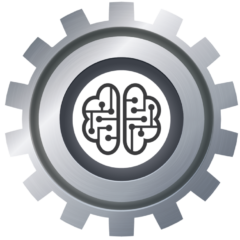Open-source refers to software that is available to the public with its source code, or the underlying programming instructions, freely accessible and modifiable by anyone. In contrast to proprietary software, which is owned by a company or individual and restricts access to its source code, open-source software is built and maintained by a community of developers who collaborate to create, improve, and distribute the software.
Over the years, my role has changed while I have been working for 20 + years at Universal Health Services. During that time, I continue to utilize Python as a key tool. In each company, the employee requires certain tasks to be completed, but may not have the perfect tool. I personally create Python programs for repetitive tasks and reduce time loss which allows me to focus on critical issues and data extraction for analysis. Python is one of many of my certifications, I have gained over the years. I love it so much, I teach it to students. You can check out some of my Python videos on my YouTube Channel.
Open-source software has been around for decades, with early examples including the Unix operating system and the Emacs text editor. However, it was the growth of the internet in the 1990s and early 2000s that really drove the development of the open-source movement. With the rise of online collaboration tools and the ability to easily share code across the internet, open-source software became an increasingly popular and viable alternative to proprietary software.
One of the key benefits of open-source software is that it is often free or significantly less expensive than proprietary software. This makes it an attractive option for businesses, organizations, and individuals who may not have the resources to invest in expensive software licenses. Additionally, because the source code is open and available to anyone, users can modify and customize the software to meet their specific needs, leading to a more flexible and adaptable software ecosystem.
Another benefit of open-source software is that it is often more secure than proprietary software. Because the source code is open and available to anyone, developers, and users can scrutinize the code for potential security vulnerabilities and work to fix them. This collaborative approach to security can lead to more robust and secure software that is less vulnerable to attacks.
Perhaps the most significant aspect of open-source software is the community of developers and users who work together to create and improve it. This community is often driven by a shared passion for the software and a desire to make it as useful and accessible as possible. This collaborative approach to software development can lead to a more diverse and inclusive ecosystem that is responsive to the needs and interests of a wide range of users.
Open-source software is now used across a wide range of industries and applications, from web development and mobile apps to scientific research and government services. Some of the most popular open-source software projects include the Linux operating system, the Apache web server, and the MySQL database. However, there are thousands of other open-source projects that span a wide range of industries and applications.
In Summary
Open-source software represents a powerful and growing movement in the world of software development. With its emphasis on collaboration, community, and accessibility, open-source software has the potential to drive innovation and democratize technology for years to come. Whether you are a developer, user, or simply someone interested in technology, the open-source movement is a fascinating and important aspect of the modern tech landscape.
#infobymattcole
 You can check out Matt’s LinkedIn account, Youtube Channel, or Podcast.
You can check out Matt’s LinkedIn account, Youtube Channel, or Podcast.Introducing my new books, ‘The Art of Critical Thinking’ and ‘The Critical Thinking Model’. Both can be read for free with Kindle Unlimited or $2.99 each via Kindle.


Pingback: Guido van Rossum - Info by Matt Cole
Pingback: Python Programming Language - History - Info by Matt Cole